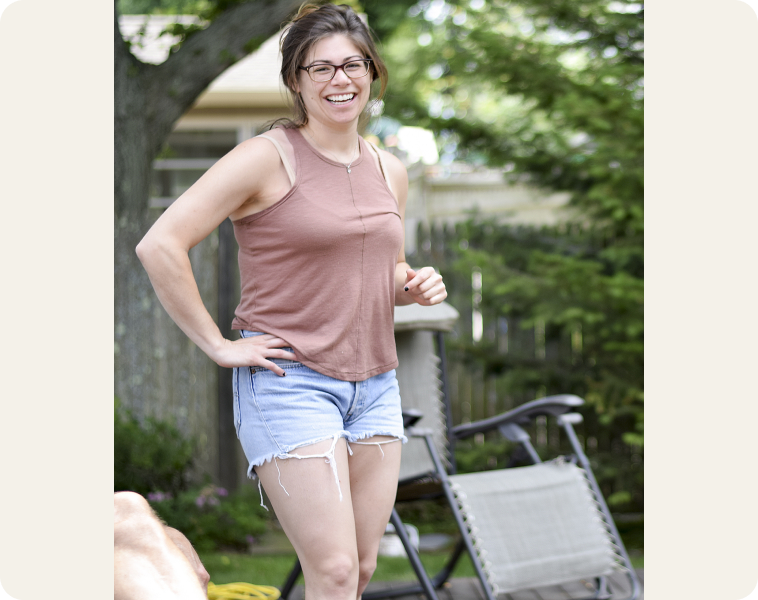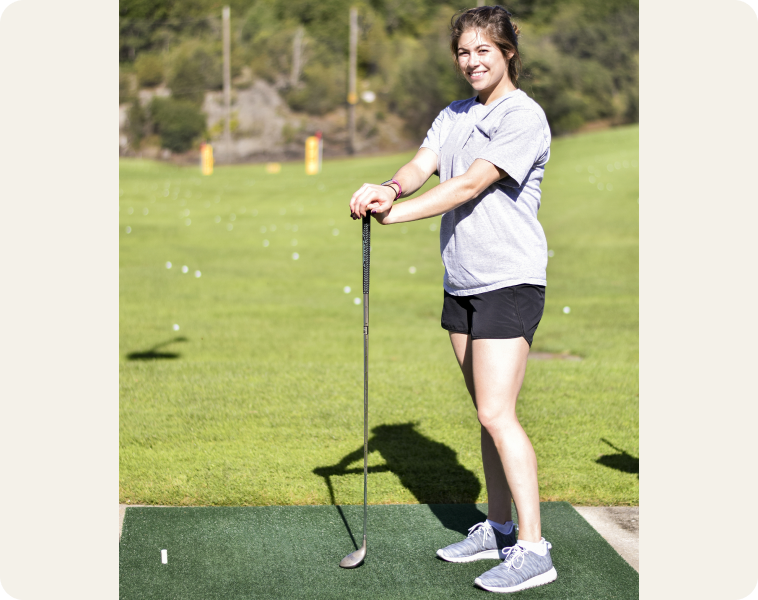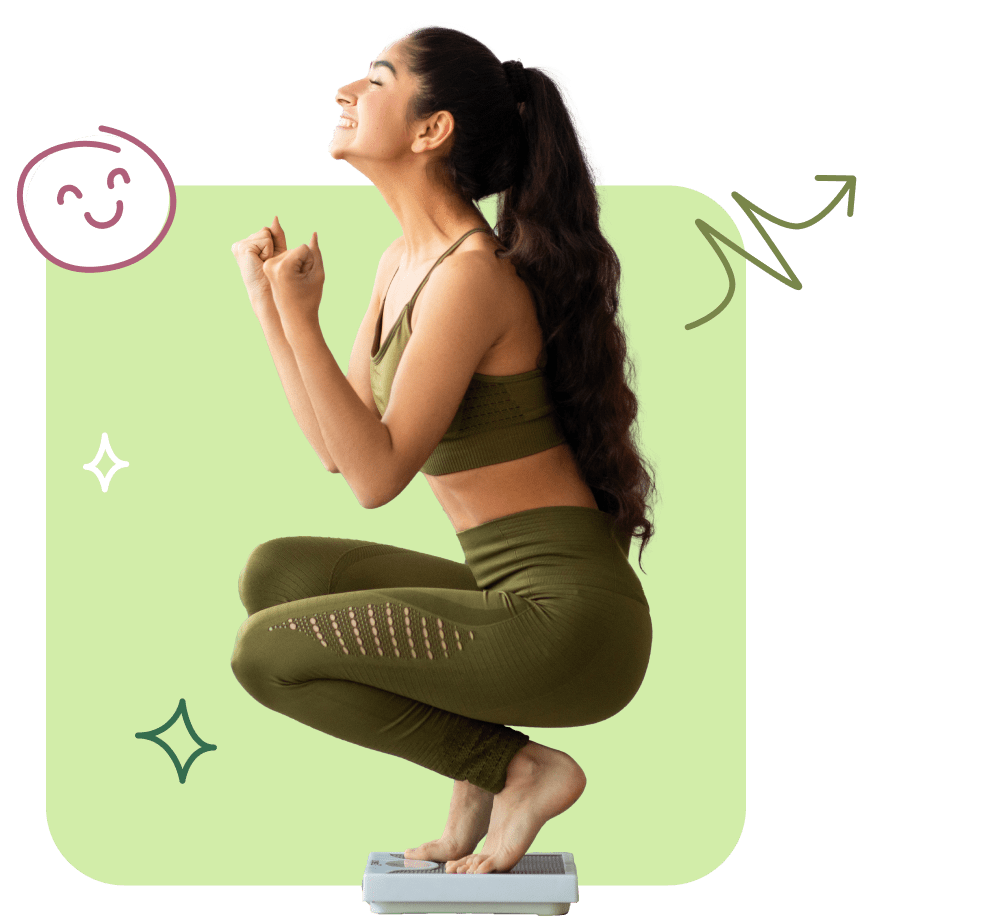Table Of Contents
Hi, I’m Madison, and my journey with intuitive eating transformed not just my body but my entire relationship with food and self-worth. After years of restrictive dieting that left me physically and mentally depleted, I discovered a path that led to sustainable weight loss while healing my damaged relationship with eating.
I was at my perfect weight a little more about three years ago. I used to work out frequently and had the ideal bikini body. After getting married and having my son, I never went back to my pre-pregnancy weight. I had a lot of extra skin and fat on my lower belly.


My Breaking Point: When Traditional Diets Damaged My Physical and Mental Health
I began dieting with determination, tracking every calorie and restricting both the quantity and variety of foods. My approach was extreme and unsustainable. I tried volumetrics and low-carb diets. I excluded bread, fried foods, sugar, salt, and anything remotely indulgent.
This restrictive approach initially resulted in a 10-pound weight loss. However, the moment I stopped the rigid dieting, the weight returned – bringing with it a host of new problems. As I kept narrowing my food choices, I developed serious issues with my hormonal balance and mental health.
My obsession with dieting created harmful eating patterns. I felt depressed, unworthy, and deeply imperfect. Every food choice became a moral judgment. I’d measure my self-worth by how “good” I’d been with my diet that day. Looking back, I was caught in a destructive cycle that was damaging more than just my physical health.
Discovering Intuitive Eating: The Unexpected Path to Weight Loss
My turning point came when I was actually searching for something completely different – an app for more calorie-burning exercises. Instead, I stumbled upon the Lasta app, which introduced me to intuitive eating principles. Initially skeptical, I decided to try their weight loss psychology guide and began tracking my habits and mood instead of just calories.
This discovery provided me with knowledge, support, and genuine motivation. It completely changed my perspective on my body, eating patterns, and exercise. Physical activity transformed from a punishment for indulgences into something I genuinely looked forward to. This fundamental shift in mindset marked the beginning of my healing journey.
Intuitive Eating Before and After: My 53-Pound Transformation
The intuitive eating before and after difference in my life has been remarkable. For the past year, I’ve been rebuilding my relationship with food, practicing mindful eating, and challenging the orthorexic thoughts that once dominated my thinking. The physical results speak for themselves – I’ve lost 53 pounds through this gentler, more sustainable approach.
But the transformation goes far beyond the scale. I’ve found inner peace and genuine contentment in my own skin. My body feels nourished rather than deprived, strong rather than strained. I’ve learned to trust my body’s signals instead of fighting against them.
Mindful Eating vs. Dieting: Understanding the Fundamental Differences
The contrast between my old dieting mentality and intuitive eating approach couldn’t be more stark. Here’s what I’ve learned about the key differences:
- External vs. Internal Guidance: Dieting relies on external rules and restrictions, while intuitive eating teaches you to trust your body’s own hunger and fullness cues.
- All-or-Nothing vs. Flexibility: Diets promote black-and-white thinking about “good” and “bad” foods; intuitive eating embraces balance and moderation.
- Shame vs. Compassion: Dieting culture often uses shame as motivation; intuitive eating fosters self-compassion and body respect.
- Short-term vs. Sustainable: Diets focus on quick fixes; intuitive eating builds lasting habits that support lifelong health.
This shift in perspective allowed me to make peace with food rather than battling it constantly. I stopped seeing mealtimes as moral tests and started experiencing them as nourishing, enjoyable parts of my day.
How Intuitive Eating Improved My Relationship with Food
Intuitive eating taught me to listen to my body’s natural hunger and fullness signals – something I’d completely lost touch with during years of strict dieting. I learned to eat when I was physically hungry, not just when a diet plan allowed it.
I now understand that all foods can fit into a healthy lifestyle. Nothing is forbidden, which ironically makes it easier to choose nutritious options most of the time. When I do enjoy treats, I savor them fully without guilt, which prevents the binge-restrict cycle that previously trapped me.
This peaceful relationship with food has improved every aspect of my life. Food no longer occupies constant mental space, freeing me to focus on other priorities and joys.
The Psychology Behind My Intuitive Eating Weight Loss Results
My intuitive eating weight loss results came from addressing the psychological aspects of eating rather than just focusing on calories in, calories out. I discovered that much of my overeating was driven by emotional needs rather than physical hunger.
By working with the psychological tools in the Lasta app, I identified my emotional eating triggers and developed healthier coping mechanisms. I stopped using food to soothe stress, boredom, or sadness, which naturally reduced my overall intake without feeling like restriction.
The intuitive eating approach also removed the psychological pressure of “forbidden foods,” which had previously led to obsessive thoughts and eventual binges. By giving myself unconditional permission to eat, the allure of these foods diminished, and I found myself naturally gravitating toward balanced choices most of the time.
Beyond Weight Loss: How Intuitive Eating Restored My Mental Health
While the physical transformation has been significant, the mental health benefits of intuitive eating have been truly life-changing. The constant anxiety about food choices, guilt after eating, and obsessive calorie counting had taken a severe toll on my psychological wellbeing.
Intuitive eating gave me mental freedom. I no longer wake up dreading food decisions or go to bed feeling like a failure for eating “wrong.” This approach has helped me rebuild my self-worth separate from my weight or food choices.
I’ve reclaimed countless hours of mental energy previously spent on diet planning, calorie math, and food guilt. That energy now goes toward more fulfilling aspects of my life – being present with my family, pursuing interests, and genuinely enjoying each day.
Learning to Distinguish Between Emotional Hunger and Physical Hunger
One of the most valuable skills I’ve developed is the ability to differentiate between true physical hunger and emotional hunger. This distinction has been crucial to my success. Here’s how I learned to tell the difference:
- Physical hunger develops gradually, can be satisfied with any food, and stops when I’m full
- Emotional hunger comes on suddenly, often craves specific comfort foods, and persists even after I’m physically full
- Body signals like stomach growling, energy dips, and light-headedness indicate genuine hunger
- Emotional triggers like stress, boredom, celebration, or sadness often prompt non-hunger eating
When I identify emotional hunger, I pause and ask what I truly need. Often it’s rest, connection, comfort, or distraction – not food. This awareness has naturally reduced unnecessary eating without feeling like I’m depriving myself.
Helping My Family Adopt Healthier Habits Through Intuitive Eating
One unexpected benefit of my intuitive eating journey has been its positive influence on my family’s relationship with food. Rather than imposing strict rules or creating “diet food” versus “regular food” divisions, I’ve been able to model healthier attitudes for my husband and son.
We now enjoy family meals that focus on variety, satisfaction, and nourishment rather than calorie counts. I’ve taught my son to recognize his own hunger and fullness cues, hopefully sparing him from the disordered relationship with food I experienced.
Our household food environment has shifted naturally toward more nutritious choices, but we also enjoy treats without drama or guilt. This balanced approach has created a much healthier food culture in our home that supports everyone’s physical and mental wellbeing.
Embracing Imperfection: The Key to Sustainable Weight Loss
Perhaps the most transformative lesson from my intuitive eating journey has been embracing imperfection. Previous diets demanded flawless adherence, setting me up for inevitable failure and self-loathing. Intuitive eating taught me that progress isn’t perfect – it’s consistent.
I’ve learned that occasional overeating or emotional eating doesn’t erase my progress. Instead of seeing these moments as failures, I view them as valuable information about what my body or emotions need. This self-compassion prevents the destructive cycle of shame and restriction that previously derailed my efforts.
I genuinely love the mindfulness that intuitive eating has helped me to develop. I finally understand what I am doing and why – when I want a snack because I am sad and when I am really hungry. And I’m happy that I can help my family become healthier with me.
It’s not about being perfect, but it is as it is, and I am glad I didn’t give up.
success-stories









Madison you’re doing great ? It’s not as hard to lose weight as it is to keep it off
Thanks for your intuitive eating weight loss success stories, it’s inspiring!
Hi, Mary 🤗
Thank you so much for your kind words!